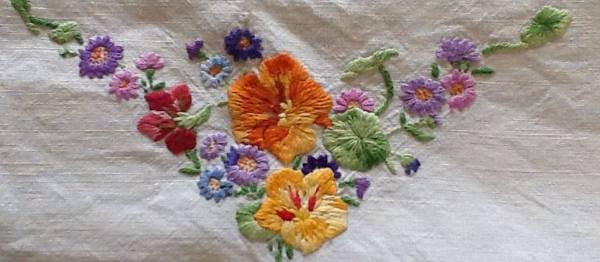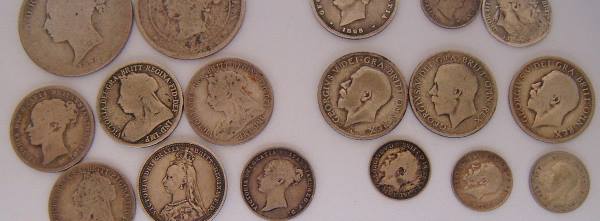The word mingei, an acronym derived from minshuteki kogei, meaning ‘people’s art’, was first coined in 1925 by art critic and philosopher, Soetsu Yanagi. It was introduced at a time when many Japanese intellectuals were reacting against the overwhelming cultural inroads of intensive industrialisation and its methods of mass production. The Mingei movement was not just a rejection of this influence, but a more positive synthesis in which Western art traditions were used to gain a new appreciation of Japanese traditional crafts. In Yanagi’s case, William Morris’ emphasis on the art of the common people, and the mysticism of William Blake were combined with the Buddhist concepts of sabi and wabi, describing reserve, detachment and frugality, and mu, meaning ‘nothingness’.1 Mingei valued spontaneous creativity over intellectual composition.
Mingei objects encompass all fields from textiles, ceramics, wood, lacquer and metalwork to pictorial art. They are divided into two categories: traditional and contemporary. To qualify as traditional, objects must meet strict criteria. They must be made by hand by an anonymous craftsperson. They must be simple, functional, have no excess ornamentation, and reflect the region in which they were made.
Traditional Japanese chests fulfil all of these criteria. Tansu (pronounced – dansu in compounds), the generic name for Japanese chests, were produced from the Edo period through the Meiji and Taisho eras to the Great Kanto Earthquake (1657-1923). Their development during this period was a response to growing prosperity and the increased availability of goods.The influence of Zen Buddhism and the indigenous Shinto religion meant that Japanese houses displayed a simplicity and a reverence for space which discouraged excessive furnishings. This aesthetic also extended into an appreciation for the beauty of natural materials. Craftsmen progressively eliminated extraneous adornment in a quest for an intuitive awareness of reality. Japanese chests are characterised by their linearity and simplicity. At the same time there is a decided preference for asymmetry in order to counteract any rigid formality or monotony. As a rule, light-coloured woods, such as cypress, cedar, pine, paulownia and magnolia, are left unfinished to convey a sense of purity, while richly grained woods, such as elm, mulberry, boxwood, cherry, maple, black persimmon and walnut, are thinly lacquered to heighten the sheen and beauty of the grain.
At the end of the sixteenth century the Tokugawa shogunate built a new capital on the site of a small fishing village, Edo, where present day Tokyo is located. The Edo period (1600-1868) saw the development of Japan’s first urban culture. While the implementation of a strict system of social stratification advantaged the samurai class, peace and a centralised bureaucracy encouraged trade and the growth of a prosperous merchant class. This led to a boon in the production of tansu. Among the most in demand were chests to store clothing.
Samurai tansu
This chest was used by the samurai man to store his official clothing. They were known as Edo isho ryobiraki kasane-dansu, literally ‘Edo-style double door chest on chest’,4 but are commonly called samurai tansu. A samurai would have had a large number of these chests to store the multitude of costumes required for different seasons and situations. They were kept in storehouses adjacent to the house and were brought in and out as required. Each chest was fitted with large U-shaped iron handles on either side, so that they could be easily carried on a large pole by two servants.
As the name suggests, they were usually constructed in two pieces which stacked one on top of the other. The hinged double doors on the top chest open to reveal two large inside drawers. The bottom chest also consisted of two drawers and sometimes included a small door compartment on the bottom right-hand side. The structural case is made of Japanese cryptomeria or cedar (cryptomeria japonica) which is known as sugi in Japan. The doors and drawers are made of paulownia (paulownia tomentosa, or kiri). This wood was chosen because it is lightweight, easy to work with and impervious to moisture.
The metalwork on these chests is striking. The one pictured [Figure 1] features a ring of iron around the centre lockplate. A plain horizontal band of iron extends from the side and is intersected by a vertical strip which fans out slightly at both ends. There are five iron hinges attached to each door. The bottom drawers have simple rectangular locks with slightly curved bottoms, and simple warabite style drawer handles.
Double-door chests were produced from the mid-Edo period to the Taisho era. It is generally agreed that they originated in the Kanto Plain area, but then became popular all over Honshu.
The growing prosperity of the merchant class and the restrictions placed on them by the shogunate led to the development of specialised chests used in shops and businesses. These restrictions were characterised by the sumptuary laws, known as the Kansei Reform, enacted by the shogun’s regent, Matsudaira Sadanobu, in 1789. The laws were aimed at instilling a sense of social austerity and lowering the profile of the merchant class which had prospered at the expense of the samurai class.5 Limitations were placed on tansu design and the use of decorative shelving and lacquer finishes. Two examples of the specialised chests which emerged during this period are the kaidan- and the choba-dansu.
Kaidan-dansu (Staircase Chests)
These chests developed during the late Edo period and served a dual purpose, serving as a set of stairs as well as built-in storage compartments for merchandise. Merchants and their families lived both at the back of the house and upstairs, while their shop was close to the street front. The street entrance was hung with a noren (doorway curtain) advertising the nature of the business they conducted.
Kaidan-dansu were constructed in either one, two or three pieces. The one illustrated is a two-piece stacking chest construction. [Figure 2] As they were purpose-built to fit specific spaces the number of steps and the direction of the chests varied. The one illustrated features seven steps and runs from right to left. It is made of cryptomeria and features elm, or zelkova (Zelkova serrata, or keyaki), drawer fronts. Zelkova was prized for its grain and warm amber colour. Metalwork is minimal with indented finger grips for the sliding doors and simple drawer pulls.
Choba-dansu (Merchant Chests)
These chests were used to store items used in shop administration, such as account books, ink, writing implements and documents. Although cho means ‘accounts’, these chests take their name from the choba, the raised tatami-covered area where they were kept and where business was usually conducted. They were usually sturdily constructed in one piece and sometimes featured heavy ironwork. The example illustrated features horizontal slats of wood on the sides and the sliding doors of the chest. [Figure 3]
The restoration of imperial authority in 1868 heralded the disintegration of the rigid class structure and greater liberty of expression. The new Meiji era, known as the Meiji Restoration (1868-1912), embraced the modern industrial world. This change in leadership was accompanied by the development of distinctive regional tansu styles, perhaps the most well known of which was the chests originating from Sendai, the largest city in northern Honshu.
Sendai Clothing Chests (Sendai isho-dansu)
Sendai clothing chests represented a departure from the original clothing chest, which were meant to be kept out of sight in the family storehouse. These chests were placed in a prominent position next to the family altar or the tokonoma, an alcove where a scroll was hung,6 and were, therefore, more decorative.
Sendai chests are among the most valuable on the tansu market. They were larger than normal clothing chests and constructed in one or two pieces. The example illustrated is a two-piece stacking style and features a small door compartment on the bottom right hand side of the chest. [Figure 4] The boxes are made of darkened cryptomeria and the drawer fronts are made of beautifully grained elm, richly stained to bring out the grain. Metalwork is distinctive on Sendai chests, often featuring flower, crane, or dragon designs. In the example the prominent ironwork is on the small door compartment.
Other examples of specialised chests are cha-dansu for storing bowls and utensils for the tea ceremony; kusuri-dansu (medicine chests) for herbs and other medicinal items, funa-dansu (sea chests) used as ship’s safes, and sho-dansu (book chests) to name just a few. Two large storage cabinets were those used for kitchen and bedding items.
Mizuya-dansu (Kitchen Chests)
These large chests were kept adjacent to the kitchen and used primarily for the storage of eating utensils and food. They were most often constructed in two pieces. The example illustrated features smaller compartments with sliding doors and drawers on the top section, while the bottom is a large cabinet with sliding doors and a row of three drawers along the bottom. [Figure 5] They were generally made of cryptomeria and this example features zelkova faces for the drawers. As is traditional, it has no metalwork except for the simple warabite-style drawer pulls.
Mizuya, meaning ‘water area’, take their name from the area where they originated Lake Biwa in southern Honshu province. They date from the middle of the Edo period through to the early Taisho period. Later pieces had more sophisticated woodwork,7 such as the one illustrated which has carved cut-out designs on the sliding doors of the top section.
Futon-dansu (Bedding Chests)
These chests were also large because they were used to store bedding. They are rather more uncommon. The example illustrated is a two-piece stacking chest construction. [Figure 6] It features large sliding doors on the top section, while the bottom section is a series of drawers, which may have been used to store clothing. It is made of cryptomeria with zelkova drawer faces.
This brief article has attempted to illustrate the complex factors that influenced the evolution of the Japanese cabinetry tradition.
Although form was primarily determined by function, it is their efficiency of design and creative simplicity, attributes so admired by Yanagi, that continue to give traditional Japanese chests an intrinsic appeal up to the present day, both in Japan and around the world.




